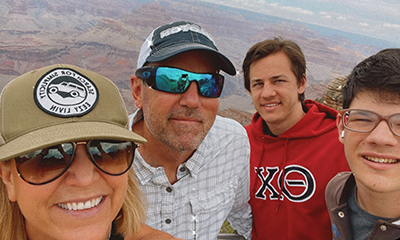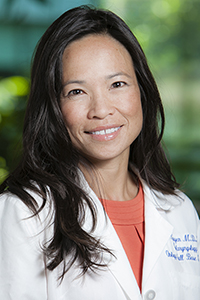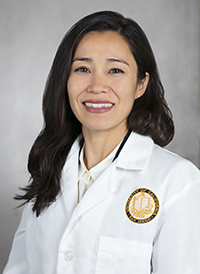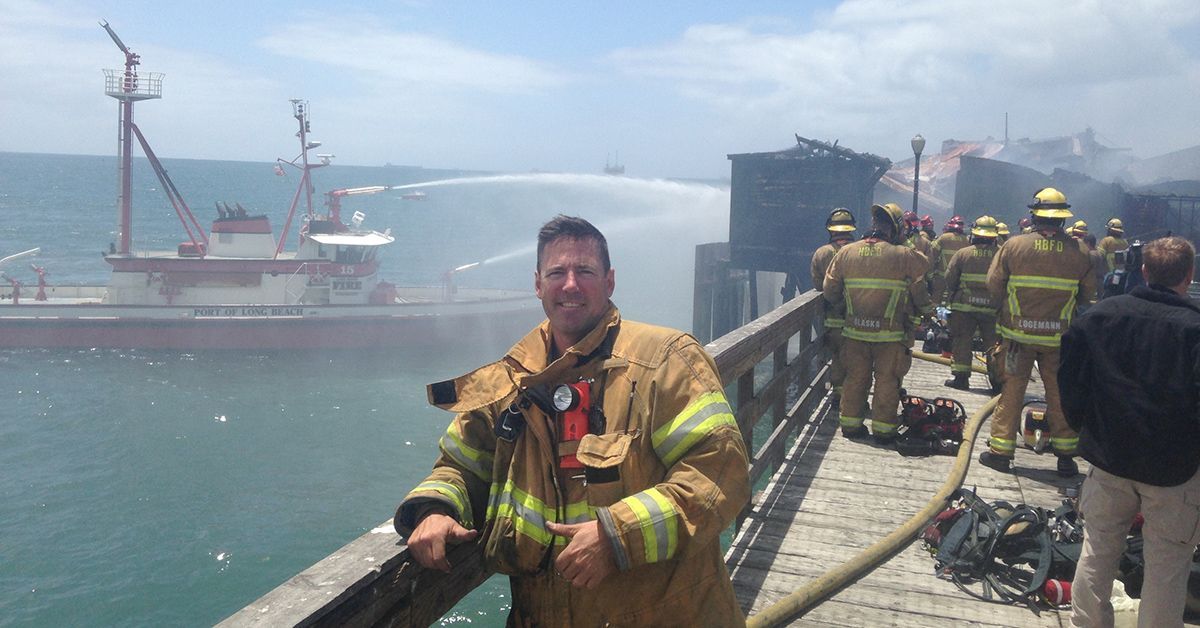Facial Nerve Surgeons Give Firefighter His Smile Back
Specialized team at UC San Diego Health performs facial reanimation surgery to treat facial paralysis
Story by:
Published Date
Story by:
Topics covered:
Share This:
Article Content
Steve Chafe, a firefighter for more than 25 years, is not taking anything in life, including a smile, for granted.
Nearly five years ago, after finishing a 72-hour shift, his life changed. He couldn’t quite gather his thoughts; he couldn’t read, and his speech was jumbled. An MRI identified Chafe had a transient ischemic attack. It also found something unexpected: a large tumor the size of a golf ball.
“I thought I had cancer,” said Chafe.
Chafe was diagnosed with a rare, benign and slow growing skull base tumor that affects nearby critical nerves. Approximately 3,000 people are diagnosed with this type of tumor annually. The pressure caused by a tumor can result in hearing loss, ringing in the ear, loss of balance and potentially facial paralysis.

Due to the size and position of Chafe’s tumor, delicate facial nerves were impacted, leading to facial drooping and paralysis on the right side of his face.
His tumor was removed November 2018, which paved the way for a specialized team at UC San Diego Health to repair the damage the tumor caused.
“That surgery to remove the tumor was the beginning of a new chapter and an improved life,” said Chafe.
Facial Nerve Team Performs Delicate Microvascular Reconstructive Surgery to Restore Smile
For complex cases such as Chafe’s, where the large sized tumor had been pressing on his brain stem causing nerve issues, facial nerve surgeons at UC San Diego Health work together to develop a specialized treatment plan, an offering that is only available at a few institutions in the country.

“Mr. Chafe is an example of why we have the facial nerve team at UC San Diego Health,” said Quyen Nguyen, MD, PhD, head and neck surgeon with specialty training in neurotology and skull base surgery at UC San Diego Health. “As the only academic medical center in the region, we offer the highest level of support that involves research, medicine, surgery and recovery.”
Chafe’s first facial nerve surgery involved a nerve transfer and placement of a nerve graft across the face to provide him with a bite-driven smile. The cross-face nerve graft was collected via a minimally invasive approach from a muscle in Chafe’s ankle, and allowed for a future option of muscle transfer to restore his spontaneous smile.
After surgery, Chafe underwent multiple sessions with the dedicated facial palsy physical therapy team at UC San Diego Health, as well as targeted chemodenervation, or Botox, to maximize his smile and facial function.
Two years after his first facial nerve surgery, and after multiple discussions with his care team, Chafe and his wife expressed motivation and a strong interest to recover his spontaneous smile. In 2021, Chafe underwent a gracilis free muscle transfer.
Jacqueline Greene, MD, head and neck surgeon with advanced subspecialty training in facial reanimation and mcrovascular surgery at UC San Diego Health, designed and carefully harvested a portion of the gracilis muscle in Chafe’s leg to restore a natural, spontaneous smile.
“We connect nerves that are 1.5mm in diameter or less with sutures that are thinner than a strand of human hair, as well as vessels that are smaller than 2-3mm in diameter,” said Greene.
“They’re tiny vessels, but they’re mighty.”
Two years after his first facial nerve surgery, and after multiple discussions with his care team, Chafe and his wife expressed motivation and a strong interest to recover his spontaneous smile. In 2021, Chafe underwent a gracilis free muscle transfer.
Jacqueline Greene, MD, head and neck surgeon with advanced subspecialty training in facial reanimation and mcrovascular surgery at UC San Diego Health, designed and carefully harvested a portion of the gracilis muscle in Chafe’s leg to restore a natural, spontaneous smile.
“We connect nerves that are 1.5mm in diameter or less with sutures that are thinner than a strand of human hair, as well as vessels that are smaller than 2-3mm in diameter,” said Greene.
“They’re tiny vessels, but they’re mighty.”
“Mr. Chafe is an example of why we have the facial nerve team at UC San Diego Health. As the only academic medical center in the region, we offer the highest level of support that involves research, medicine, surgery and recovery.”

According to Greene, the gracilis free muscle transfer involves taking a narrow, carefully designed portion of muscle from the patient’s leg and transplanting it, along with its neurovascular supply (nerve, artery and vein) into the patient’s face. The new muscle is then connected to the blood supply from the face and a nerve graft that previously connected to the healthy facial nerve in the prior surgery.
“The goal of this delicate procedure was to make Mr. Chafe smile and laugh spontaneously again,” said Nguyen.
Gracilis nerve transfers include a multi-disciplinary team of experts from neurosurgery, otolaryngology, facial plastic surgery, neurotology, radiology, audiology, physical therapy, nursing, social work and more.
“Mr. Chafe had a long road to recover his smile and is truly an inspiration to those who had the honor and privilege of taking care of him,” said Greene.
Firefighter Full of Gratitude and Living Fully
A year after his gracilis surgery, Chafe says he feels like a new version of himself.
“My medical team literally and figuratively gave me my smile back.”
A champion in Chafe’s recovery has been his wife, Christina, and their two sons, along with his fellow firefighters who surprised Chafe with a backyard redesign for him to enjoy at home with his family after surgery.
Now, Chafe spends time with his loved ones and the newest member of their family, Donnie, a two-year old black lab service dog.
“Donnie gives me purpose. He’s my shadow,” said Chafe.
Chafe also focuses on his rehabilitation by exercising regularly and keeps a positive outlook on his life.
“The things I can change and staying positive is what I choose to focus on,” said Chafe. “I exercise, I’m healthy and I’m with my family, and that’s all that matters. None of that would have been possible without the incredible, life-saving team at UC San Diego Health.”
The Facial Nerve Clinic at UC San Diego Health is a comprehensive care and research center for people with facial paralysis. The facial nerve team includes surgeons with expertise in facial plastic and reconstructive surgery, neurotology, plastic surgery and a dedicated team of facial physical therapists.
You May Also Like
UC San Diego is Strengthening U.S. Semiconductor Innovation and Workforce Development
Technology & EngineeringStay in the Know
Keep up with all the latest from UC San Diego. Subscribe to the newsletter today.




